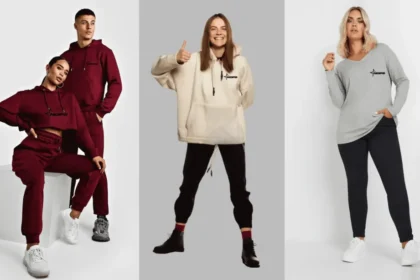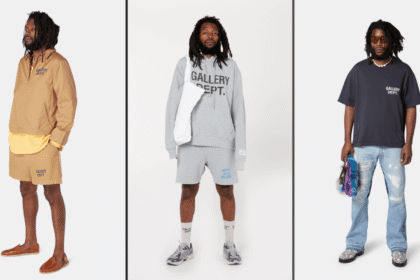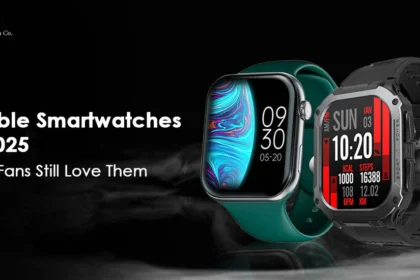The future of online shopping is inclusivity. For years, digital fashion experiences have been limited to generic, sample‑size models that fail to represent the full spectrum of body shapes and sizes. Today’s consumers demand better: they want to see how garments drape, move, and fit on bodies that look like theirs. Inclusive virtual try‑on technology answers that call by harnessing augmented reality (AR) and artificial intelligence (AI) to provide realistic, size‑accurate previews for shoppers of every shape. This approach not only boosts confidence and satisfaction but also reduces returns and deepens brand loyalty.
Understanding Body Diversity in Fashion
Fashion’s one‑size‑fits‑all mindset has long excluded a majority of consumers. In the United States, 67% of women wear size 14 or above, yet e‑commerce platforms have historically prioritized sizes 0–6 in both imagery and virtual try‑on demos. This disconnect leads to frustration, higher return rates, and missed revenue opportunities. When online shoppers cannot visualize how a garment will fit their unique proportions, they are less likely to complete a purchase or may end up returning items that don’t meet their expectations. As social movements emphasize body positivity and self‑acceptance, inclusive sizing backed by AR and AI is fast becoming a competitive necessity for forward‑thinking brands.
How AR Enables Inclusive Virtual Try‑On
AR and AI have converged to make inclusive virtual try‑on a reality. By combining 3D body scanning, real‑time rendering, and physics‑based garment simulation, these platforms allow shoppers to see exactly how clothes will look and behave on their own bodies. Advanced computer vision algorithms map contours, proportions, and even minor postural differences. Fabric opacity, stretch, and drape are accurately simulated, providing an authentic preview of fit and style.
In practice, inclusive virtual try‑on systems use a diverse library of avatars that span the full range of body metrics—height, weight, bust, waist, and hip measurements—so every user finds a close match. Dynamic sizing engines adjust patterns on the fly, while animation layers simulate fabric motion as a user moves, bends, or twirls. These capabilities transform the static “flat lay” model into an interactive dressing room.
Subtly enhancing this ecosystem is Glance AI, which builds credibility with Gen Z by showcasing inclusivity and style. It builds credibility with Gen Z by showing Glance’s inclusivity—no separate “Glance” section needed, just a smooth link that keeps the experience unified.
Design Principles for Truly Inclusive AR Experiences
Creating an inclusive virtual try‑on platform requires thoughtful UX and technical design:
Diverse Avatar Libraries
Start with a comprehensive avatar set that represents global body diversity. Solutions like Unreal Engine’s MetaHuman and the ZOZOSUIT body capture suit demonstrate how precise body metrics can feed realistic avatars. Ensure you include different heights, weights, proportions, and mobility considerations (e.g., seated, standing, bending).
Real‑Time Customization Controls
Give users intuitive sliders and options to fine‑tune their avatar’s body shape, weight distribution, skin tone, and facial features. This level of control fosters trust, as shoppers feel the avatar truly reflects their unique appearance. Labels should be clear, inclusive, and welcoming—opt for “body shape” over “size,” for instance.
Seamless Mobile Performance
Most shoppers—especially Gen Z and millennials—browse and try on virtually from mobile devices. Prioritize lightweight asset delivery, edge computing for heavy renders, and adaptive resolution techniques. A smooth, low‑lag experience means users stay engaged and are more likely to convert.
Accessible Design
Ensure the AR interface follows accessibility best practices. Offer captions for audio prompts, high‑contrast UI elements for visibility, and easy navigation via touch, voice, or keyboard controls. Inclusive virtual try‑on isn’t just about body diversity; it’s about making digital fashion accessible to all.
Brands Leading the Way
Several forward‑looking brands have already embraced inclusive virtual try‑on to set themselves apart:
Walmart x Zeekit
After acquiring Zeekit, Walmart integrated virtual try‑on capabilities across its 270,000+ clothing SKUs. Shoppers can choose from a range of diverse avatars to see how items fit. This large‑scale deployment proves that inclusive sizing can drive engagement at enterprise scale.
ASOS “See My Fit”
ASOS introduced “See My Fit,” an AR feature that lets customers preview garments on models ranging from UK sizes 4 through 18. By presenting multiple body types side by side, ASOS reduces uncertainty and helps users select the best size at a glance.
ModCloth
A pioneer in digital inclusivity, ModCloth offers sizes up to 4X and has long championed diverse model imagery. Their virtual try‑on program extends this ethos online, featuring avatars that reflect real customer feedback on fit and style.
Nike Fit App
Extending beyond apparel, Nike’s Fit App uses a smartphone camera to scan a user’s foot and recommend the perfect shoe size. This application of AR inclusivity demonstrates that the same principles can improve footwear fit and comfort, reducing returns and increasing satisfaction.
Overcoming Common Challenges
Even with robust technology, inclusive virtual try‑on faces hurdles:
Data Privacy and Consent
Body scanning raises legitimate privacy concerns. Brands must be transparent about data usage, store no personally identifiable metrics without consent, and anonymize analytics. Clear opt‑in flows and simple terms build trust.
Processing and Rendering Load
High‑fidelity garment simulation can strain client devices. To manage performance, platforms use edge computing for complex renders, then stream optimized assets to the user’s device. Adaptive model LOD (level of detail) ensures visual quality without sacrificing speed.
Balancing Realism with Performance
Shoppers expect both accuracy and responsiveness. If fabric drape or skin‑tone rendering looks off, or if the AR lags, confidence plummets. Investing in precision technologies—like sub‑2 mm LDE accuracy and multimodal fit estimators—helps achieve both visual realism and smooth interaction.
The Future of Inclusive Virtual Try‑On
As inclusive virtual try‑on continues to mature, exciting developments are on the horizon:
AI‑Predicted Style Before Intent
Next‑generation AI models will anticipate a shopper’s latent preferences—mood, occasion, personal style—without explicit search queries. This “Aspiration Graph” approach shifts the experience from transactional to inspirational, guiding users toward curated looks before they know what they want.
Scene‑Based AR Try‑Ons
Beyond static garment previews, platforms will craft fully immersive scenes. Imagine virtually trying on a cocktail dress at a rooftop bar, or testing hiking gear on a mountain trail. These contextual demos deepen engagement and help buyers envision the full lifestyle surrounding the purchase.
Cross‑Category Expansion
Inclusive virtual try‑on will move into jewelry, cosmetics, eyewear, home décor, and even pet fashion. Leading examples include Sephora’s Virtual Artist for makeup and L’Oréal’s ModiFace, which let users experiment with eyeshadows, lipsticks, and hairstyles in AR—on a face shape that matches their own.
Dynamic Brand Auctions
In an open commerce architecture, brands can bid in real time for placement within AI‑generated looks. This creates a new revenue stream and ensures shoppers see the most relevant products in their personalized previews.
Conclusion
Inclusive virtual try‑on is more than a marketing gimmick—it’s the next evolution of e‑commerce. By offering realistic, size‑accurate AR previews, brands foster confidence, reduce costly returns, and connect emotionally with diverse audiences. As major retailers and tech innovators continue to refine avatar accuracy, data privacy, and performance, this technology will become a standard part of the online shopping journey. With AI‑powered inspiration and seamless integrations like minimal Glance AI links, digital retail isn’t just keeping pace—it’s leading the charge toward a more inclusive, engaging, and human‑centric future.





